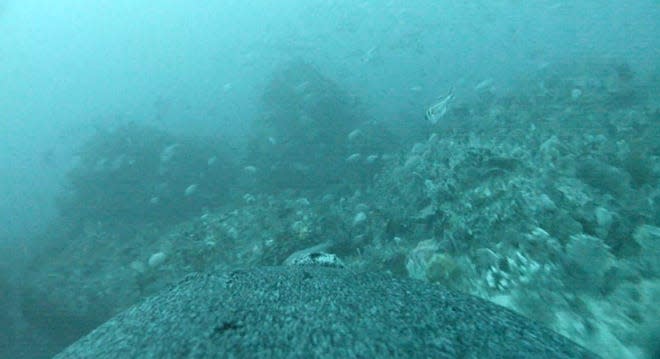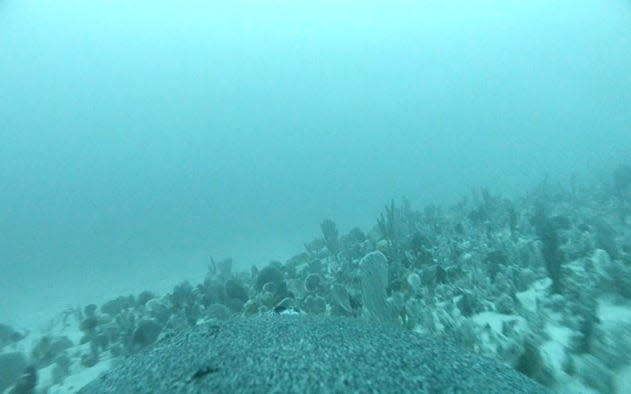Sea lions with cameras got stunning video of never-before-seen habitats on the ocean floor, surprising scientists
Australian sea lions wearing video cameras showed scientists a whole new world on the ocean floor.
The footage revealed surprisingly diverse habitats like sponge gardens, coral reefs, and kelp reefs.
Videos from seals, dolphins, and sea lions can help scientists map uncharted parts of the ocean.
Sea lions are letting scientists in on some of the ocean's secrets.
Humans have only explored about 5% of the world's oceans, and we have limited ability to study sea life in the wild, but large predators like dolphins and seals can help.
That's why a team of researchers in Australia outfitted eight female sea lions with small video-camera packs.
All eight of the sea lions had pups, which meant they had to hunt fish, octopuses, and small sharks along the shallows of the continental shelf and then come back to nurse their babies.
That gave scientists 89 hours of sea-lion POV video from the uncharted ocean floor off the coast of southern Australia, revealing areas researchers had never previously laid eyes on.
The sea lions' never-before-seen video footage is helping scientists understand ocean life in the area, and it could lead to new discoveries.
See the ocean from a sea lion's viewpoint

When Nathan Angelakis watched the footage, he was amazed to see the sea floor teeming with life.
"I was really surprised by the diversity of habitats that we saw the sea lions use," Angelakis, a PhD student at the South Australian Research and Development Institute and the University of Adelaide, told Business Insider.
The sea lions were "zigzagging" through sea sponges, kelp reefs, and corals, traveling long distances, Angelakis said. The video below shows just a sample of their adventures.
He co-authored a paper on the ocean-floor findings, which was published in the peer-reviewed journal Frontiers in Marine Science on Wednesday.
"We really didn't know what was down there. We didn't know if it was just bare plains of sand or if it was mostly reef," Angelakis said.
And that was just a snapshot of the seafloor. There may be much larger, yet-to-be-discovered sponge gardens and reefs in the area.
Discovering new habitats and species could help protect them

Research like this is a crucial first step for protecting those sea-floor habitats. Human activities and rising global temperatures are destroying the coral reefs we know about, and scientists across the planet are trying to figure out how to save them.
To safeguard other ocean habitats, researchers first have to know what's down there. There's even a good chance that some of the sponges and other invertebrates in the video footage are species unknown to science, since seafloor habitats often have endemic species that only exist in one small area.
Using sea lions to map the ocean floors is particularly valuable because it shows which habitats are most important to the predators.
Angelakis watched all 89 hours of the sea lions' footage. He estimates that each hour of video took him about three hours to analyze. He had to match the footage to GPS data from the same sea lion, identify the prey animals it hunted, categorize the type of habitat, and describe the sea lion's specific behaviors.
But he said it didn't feel like work.
"You just get a vision into a completely different world, and you're on the back of an animal," Angelakis said. "You're seeing the ocean how they see it, essentially."
Read the original article on Business Insider

